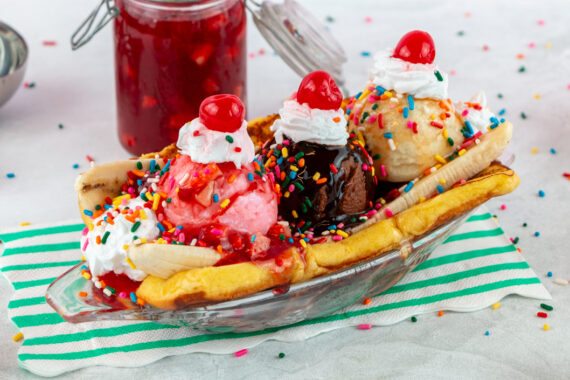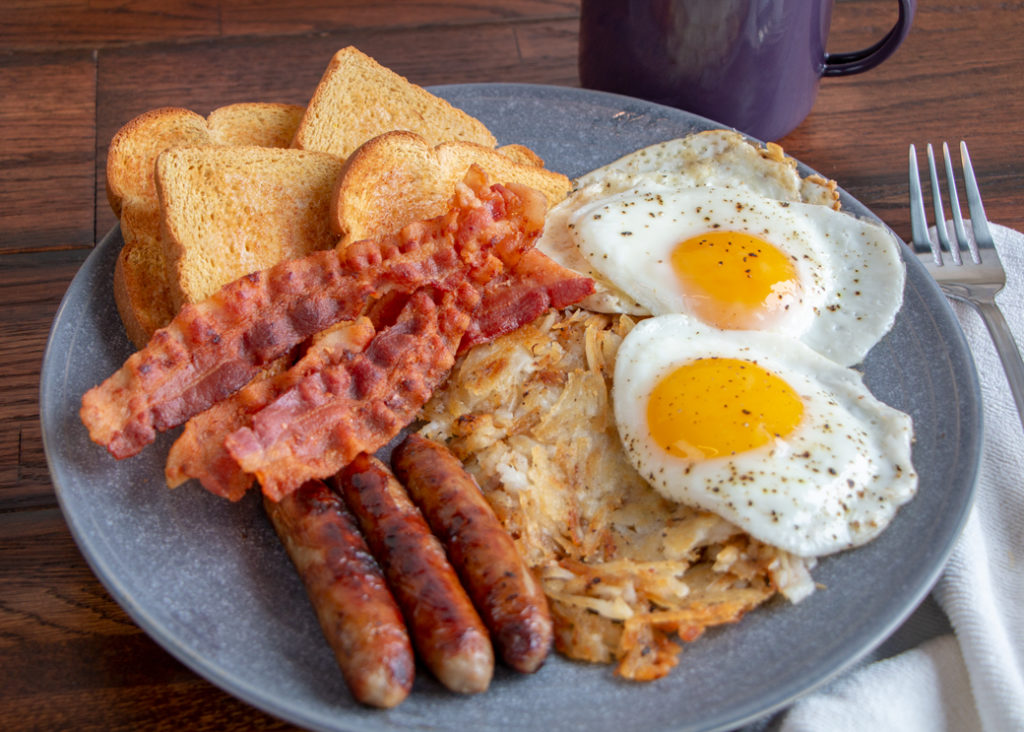
Have you ever wondered how some of your favorite breakfast foods came to be? Like—what’s the deal with eggs benedict…is French toast really French…and what exactly is scrapple? If so, you’re in luck! Keep reading to learn all about the history of some of the most popular breakfast items from the early ages until now!
For starters, here’s a fun piece of trivia: did you know that the term “breakfast” stems from the idea of breaking the fast of the prior night? Makes sense, right? (Find more fun facts below!)
Ancient Times: Bread
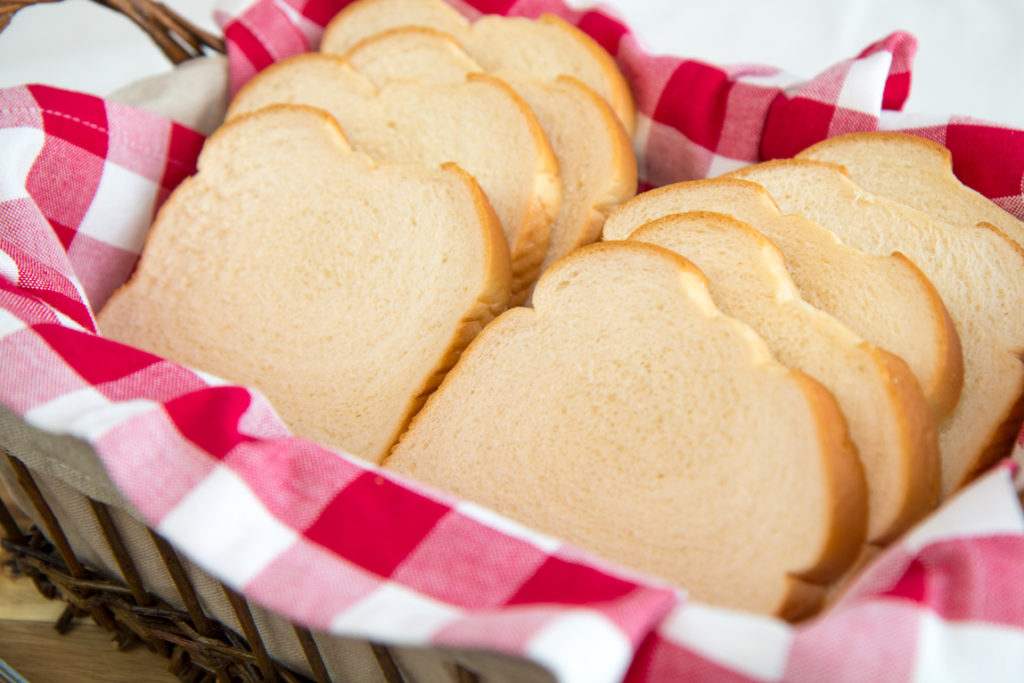
You’ve heard the phrase, “the best thing since sliced bread,” but we’re wondering what came before unsliced bread? It’s hard to think of a more classic (and ancient) food than bread. Made possible with a few basic ingredients and simple tools, it seems likely that this grain-based food (at least a simplified form) has been around for as long as we have!
History tells us that the first yeasted bread, a type of sourdough, was likely invented in ancient Egypt around 4,000 B.C. Prior to that, ancient civilizations would likely have eaten various types of unleavened bread similar to modern-day flatbread, pita, tortillas, and crackers. Science suggests that humans have been baking bread in some form for many millennia, with recent discoveries of old-fashioned grinding stones backing up new and established theories.
Since that time, and the creation of the closed oven around 1,000 B.C, humans have been baking and enjoying bread in abundance!
Did You Know?
The concept of toast was likely inspired in ancient Egypt out of a desire to preserve bread longer and keep it from hardening. Later on, toasted bread became a popular side dish during the Roman Empire. The word “toast” is derived from the Latin word “tostum,” meaning burnt or scorch.
Check out the list below for some modern variations of an ancient food!
Toast Recipes
- Citrus Toast with Thyme-Honey
- Smashed Edamame Toast
- Honey Butter Toast
- Kale, Feta & Egg Breakfast Toast
- Cinnamon Toast
- Berry, Basil & Cream Cheese Toast
Middle Ages: French Toast

Believe it or not: French toast actually existed before France itself! The first reference to this dish is in a Roman cookbook dated from 5th century AD, where it describes the process of dipping bread in a milk mixture, then frying it in oil and enjoying it as a warm sweet dish. The recipe is named “aliter dulcia” or another sweet dish.
This dish was enjoyed throughout Europe during medieval times and seen as a way to use up stale bread. It gained popularity through to the 15th century, especially in France, where it is called “pain perdu,” meaning lost bread. From France, the trend passed on to England and eventually to America in the late 16th and 17th centuries where it earned the name “French toast.”
Did You Know?
For the most part, breakfast in the middle ages was non-existent. It was often considered a form of self-indulgence and associated with gluttony; for this reason, it was only typically consumed by those who were young, sick, or elderly, or by working men who needed the extra energy for their day’s work.
It’s no wonder this famous dish has stood the test of time! Check out all the below ways to customize the classic recipe with unique flavors and toppings! (Then scroll down to see a modern take on this favorite in our new featured recipe!)
French Toast Recipes:
- Grandmas Old-Fashioned French Toast
- Cappuccino French Toast Sticks
- Cinnamon Raisin Stuffed French Toast
- Earl Grey French Toast
- Cinnamon French Toast Muffins
- Apple French Toast Bake
1300s: Full English Breakfast & Quiche

The full English breakfast (sometimes called a “fry up”) can be traced back to the early 1300s with the English gentry, who were famous for serving up large breakfast feasts to family and friends who visited their country estates.
As wealth classes began to shift around the time of the Industrial Revolution, the traditional English breakfast became accessible to more people and quickly grew in popularity throughout the Victorian era and beyond. Today, this dish remains one of the most iconic British cuisines; it typically consists of bacon, eggs, sausage, baked beans, tomatoes, fried mushrooms, black pudding, and toast. There are also regional variations of this dish including “full Irish,” “full Scottish,” “full Cornish,” etc. which include additional or varied ingredients.
Did You Know?
Another popular breakfast dish, the quiche (pictured above), is also thought to have originated during the 14th century. While quiche is often thought of as a French recipe, it actually originated in Germany before being adopted by France and renamed quiche Lorraine, after the region it is from.
Recipe:
1600s: Chocolate, Coffee, and Tea
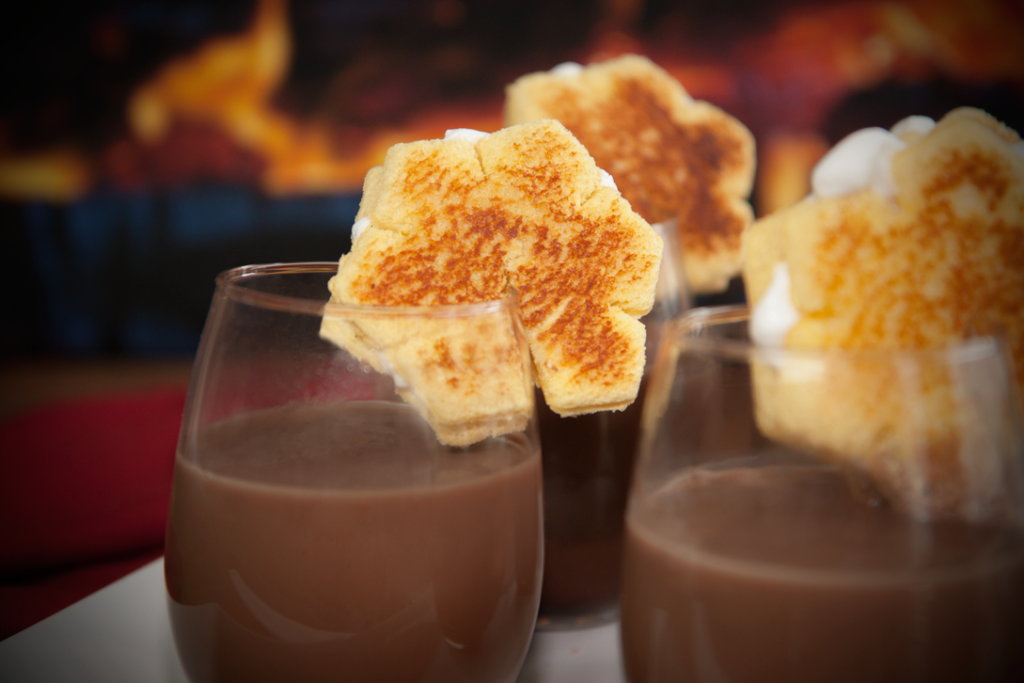
After being introduced to delicacies from the New World, coffee, tea, and chocolate (as a drinkable beverage) became popular breakfast drinks throughout Europe. This also helped to shift the criticism against breakfast, mentioned above, because it was argued that liquids did not count as breaking the fast.
Breakfast Beverage Recipes:
- Chocolate-Hazelnut Hot Chocolate
- Classic Mocha
- London Fog
- Pumpkin Spice Latte
- Slow Cooker Spiced Cider
1760-1850: Pioneer Breakfast
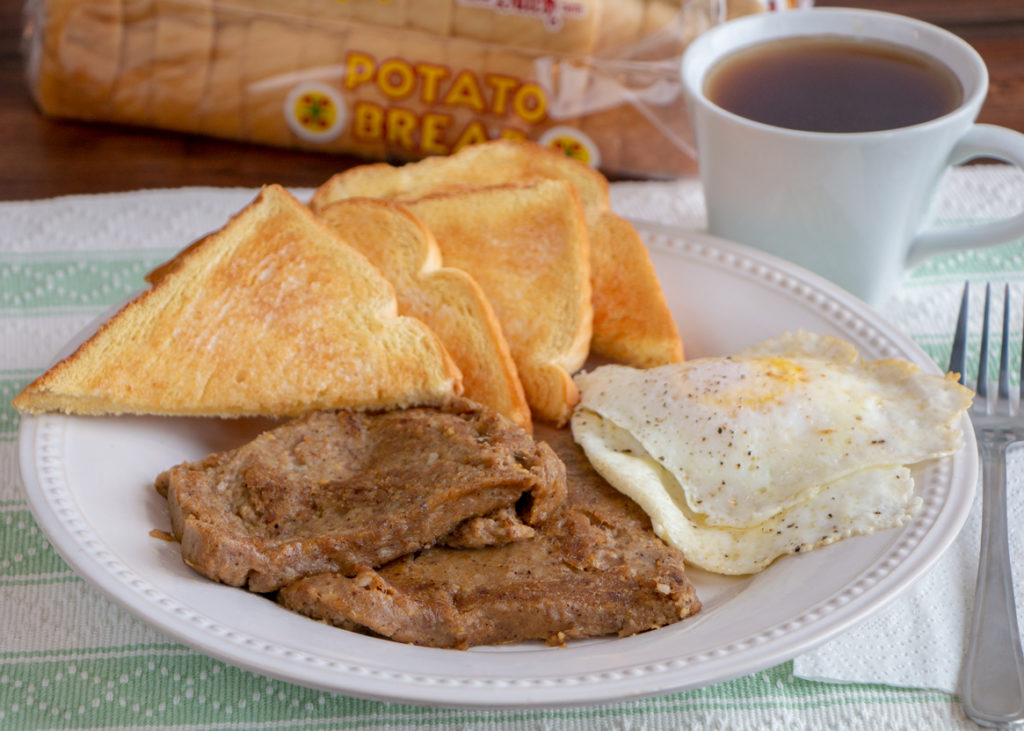
Early American breakfasts during this time period typically consisted of simple cornmeal-based foods such as corn pone, cornmeal pancakes, and various forms of corn bread.
Another popular American dish during this era was scrapple, which is made with leftover pig parts that were not able to be used for sausage or bacon, which are then combined with cornmeal or buckwheat flour and spices such as sage, savory, salt, and pepper. The mush is formed into a loaf, sliced, and pan fried before serving as a breakfast side dish. This unique dish was introduced to the Philadelphia region of Pennsylvania by German immigrants; at which point the name “scrapple” was adopted in place of the German “panhas” meaning pan rabbit. This traditional Pennsylvania Dutch food is still enjoyed across many of the Mid-Atlantic states and other areas of the country.
Did You Know?
Pork Roll, sometimes called Taylor Ham, was also created during this era (1856 to be exact). It is a pork-based processed meat product popular in New Jersey, Delaware, New York, Pennsylvania, and Maryland. Today, it is commonly served in breakfast sandwiches.
Featured Recipe:
Scrapple & Eggs Breakfast
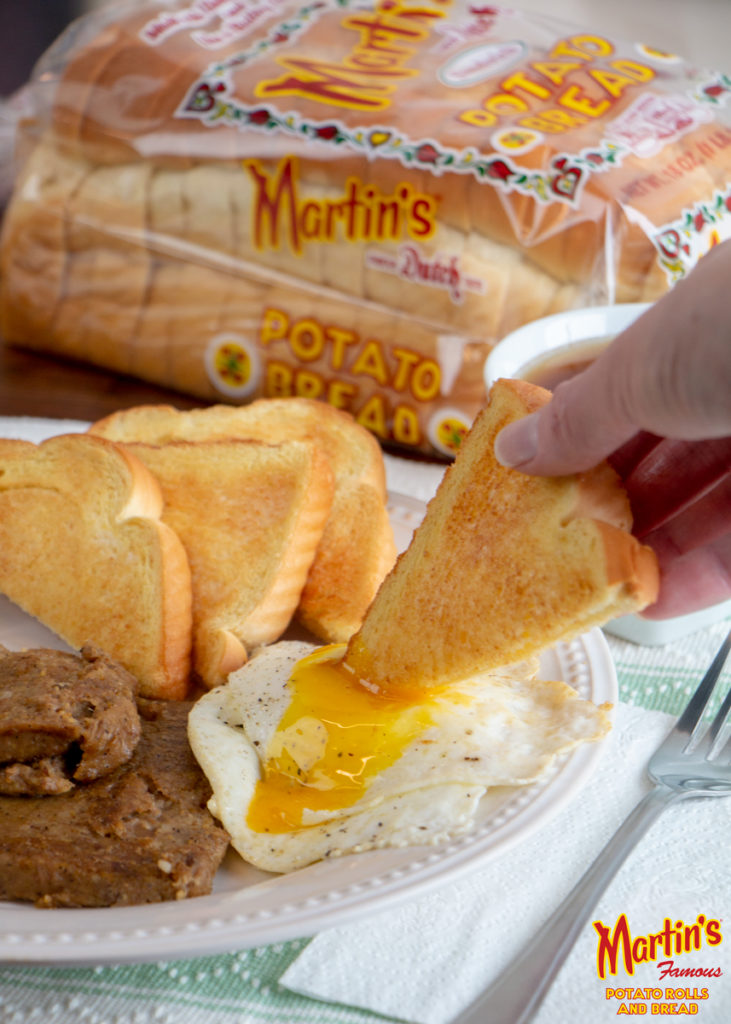
Serve yourself up some crispy pan-fried scrapple with two dippy eggs (a.k.a., over-easy or sunny-side-up) and a few slices of toasted Martin’s Potato Bread for a taste of this Pennsylvania classic (home of Martin’s headquarters!)
Try Recipe: https://potatorolls.com/recipes/scrapple-eggs-breakfast
1870: Lumberjack Breakfast
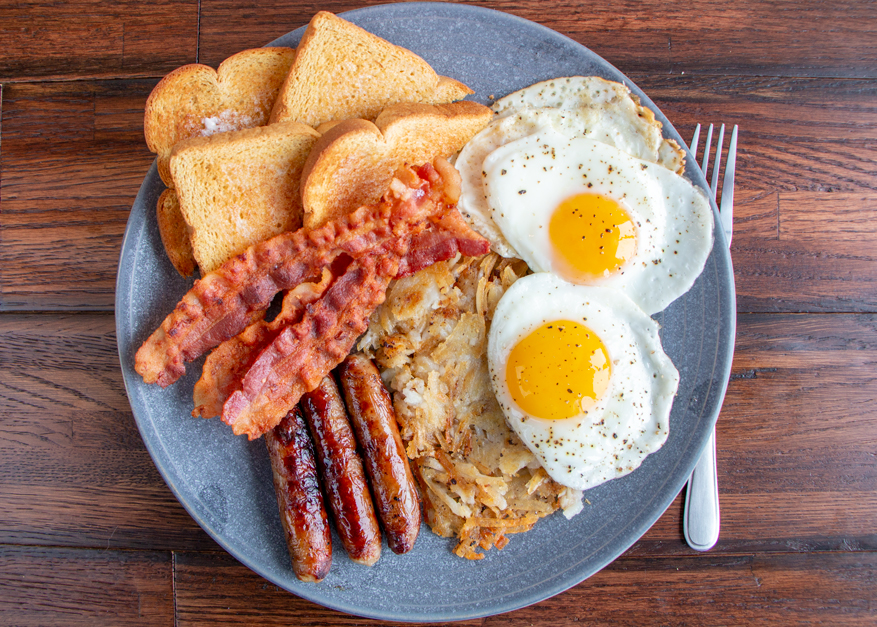
This large breakfast platter, typically consisting of an assortment of eggs, ham, bacon, sausage, and pancakes (or flapjacks), originated in Canada, supposedly in 1870 at a hotel in Vancouver, although its history is a bit uncertain. This grand dish also goes by other names including “Logger’s Breakfast” and “Yukon-style breakfast.” In many ways, it could be seen as Canada’s answer to a “full breakfast” as described above, and is very similar to what you may find on many North American diner menus today.
Featured Recipe:
Lumberjack Breakfast Plate
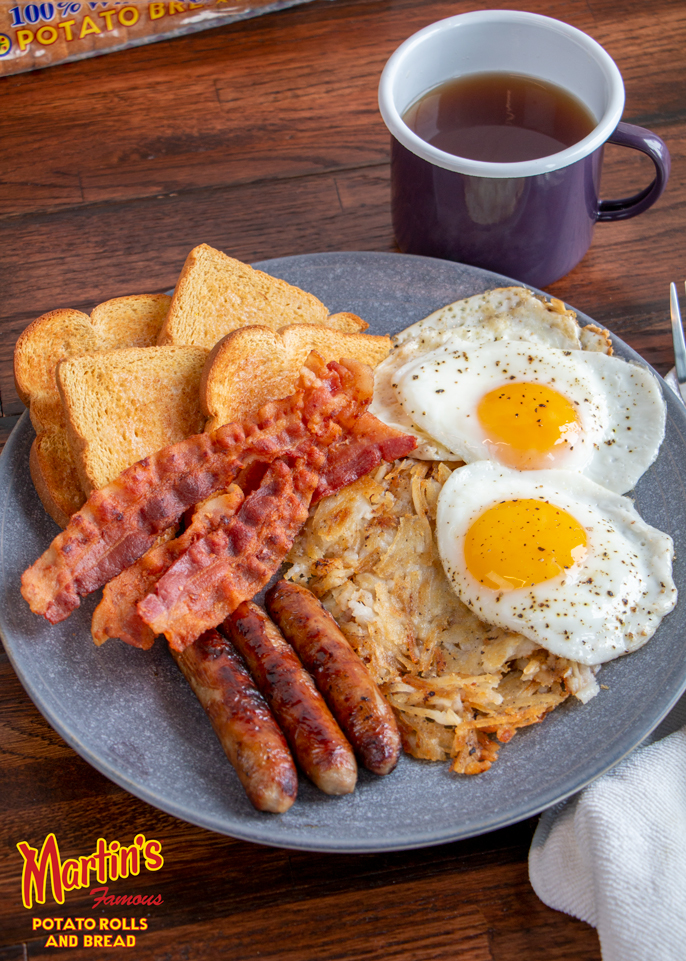
Our variation on this classic includes crispy bacon strips, sausage links, griddled hashbrowns, two fried eggs, and toasted slices of Martin’s 100% Whole Wheat Potato Bread, served with a cup of hot coffee.
Try Recipe: https://potatorolls.com/recipes/lumberjack-breakfast-plate
1890s: Egg-in-a-Hole, Eggs Benedict, and the Breakfast Sandwich
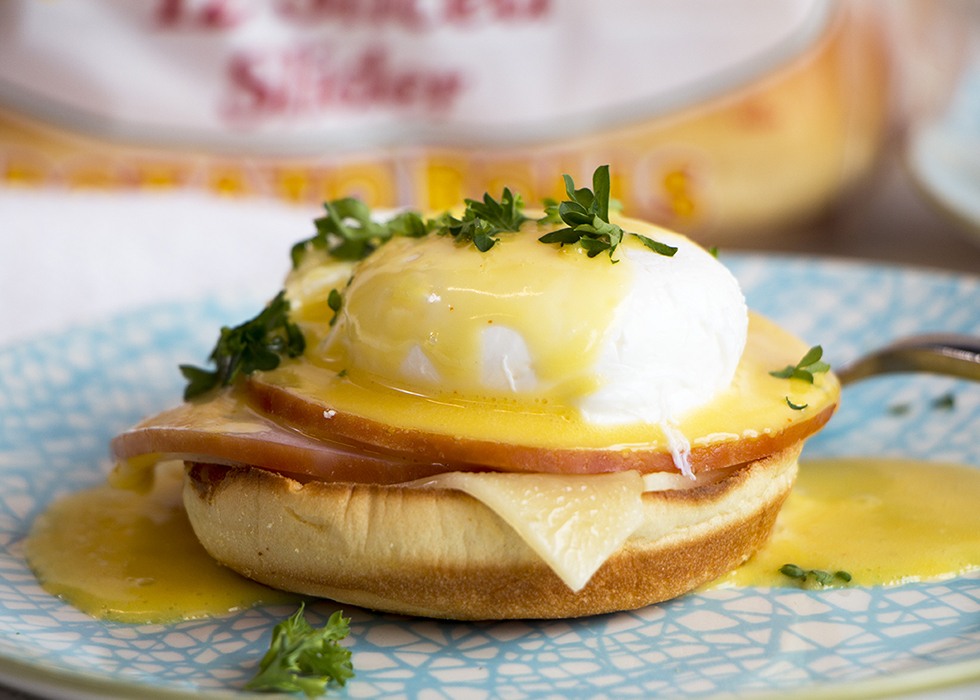
Egg-in-a-hole, which goes by a multitude of other names including egg-in-a-basket, framed eggs, egg-with-a-hat, and others, was developed in the late 19th century and first appeared in a U.S. cookbook in 1890. The recipe consists of a slice of bread with a hole cut out of the center, toasted in a hot skillet as a cracked egg fries in the center; a trendy, novelty breakfast dish even today.
Around the same time, the dish now called eggs Benedict was also making history. Despite having two conflicting theories—one involving a Mrs. LeGrand Benedict at Delmonico’s Restaurant, and the other a Mr. Lemuel Benedict at the Waldorf Hotel—it is believed to have originated in New York City between 1860 and 1894. The beloved breakfast item commonly includes an English muffin or toast, topped with a poached egg, bacon or Canadian bacon, and hollandaise sauce.
1897 is noted as the first published appearance of a breakfast sandwich in the U.S., then Denver-style with ham, green pepper, and onion. However, this craze began in 19th century London as a practical, on-the-go meal for busy workers, a trend which carried over into America during the Second Industrial Revolution. Of course, breakfast sandwiches of all kinds are still immensely popular today, thanks in part to the growth of fast food chains serving up quick breakfast options to busy commuters.
Recipes:
Egg-in-a-Hole
Eggs Benedict
Breakfast Sandwiches
1900: Cereal
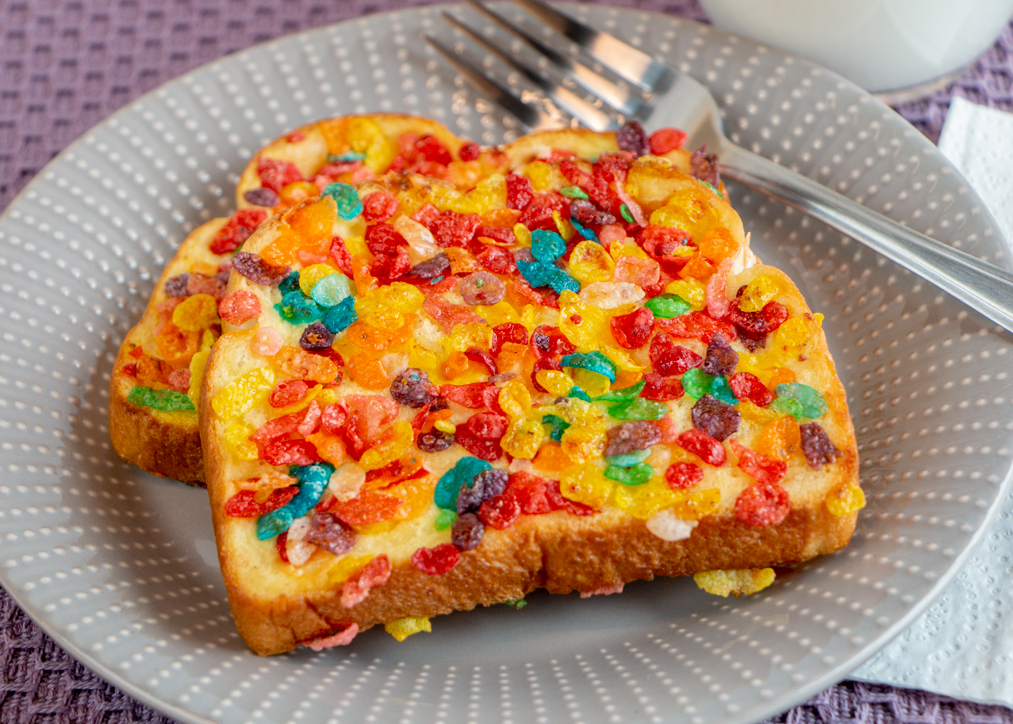
The start of the 20th century saw the birth of modern-day flaked cereal; it is credited to have been invented around 1900 by John Harvey Kellogg along with his brother Will Keith Kellogg, founder of the Battle Creek Toasted Corn Flake Co. The concept quickly took off and within a few years there were more than forty U.S. cereal companies in the surrounding area.
Featured Recipe:
Fruity Pebble French Toast
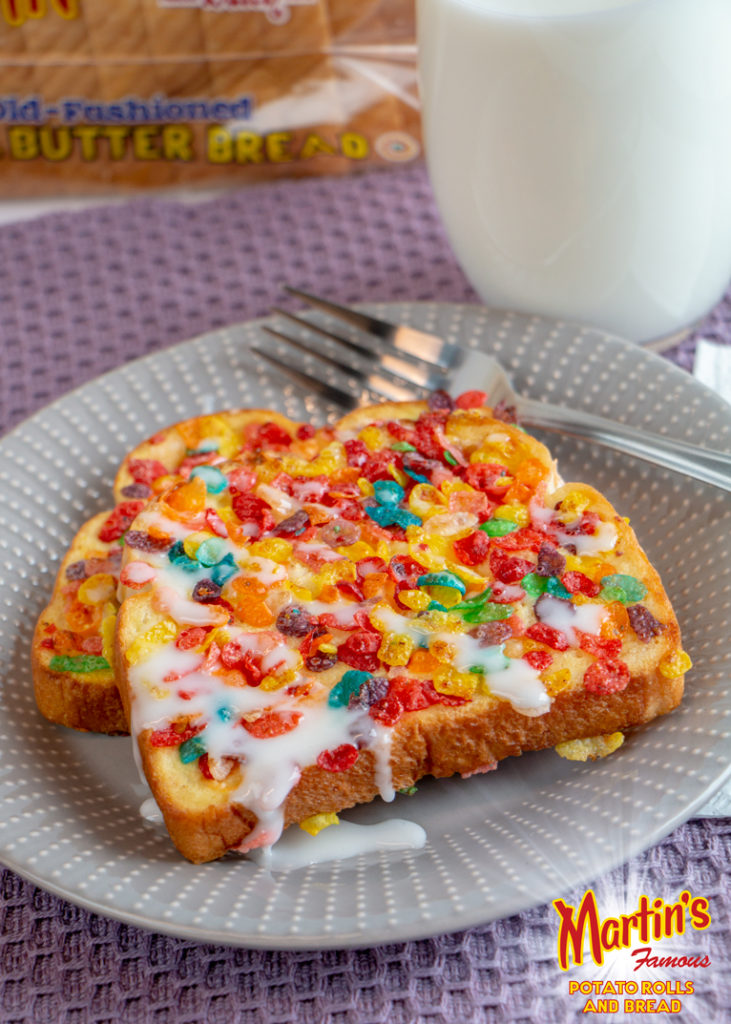
This recipe is a fun crossover between several famous breakfast foods from different eras. First—you have a variation on the more classic French toast of the late 16th and 17th centuries. Next—the fruity puffed rice coating used to “crispify” the outside is made from a popular sweetened cereal. Finally—put the two concepts together and you have a contemporary food trend that has recently been gaining a lot of traction.
Try Recipe: https://potatorolls.com/recipes/fruity-cereal-french-toast
1910: Creamed Chipped Beef & Croque Monsieur

The 1910s introduced breakfast foods like creamed chipped beef over toast in the U.S., which was popular during the Depression Era due to the inexpensive nature of its ingredients. It was also famously served in the military throughout much of the early part of the century for the same reason, as well as the ease of preparing. The dish consists of dried chipped beef, tossed in a white gravy of flour, milk, butter, and spices, then served atop toasted bread.
Meanwhile, in Paris, this is around the same time that the beloved Croque Monsieur, the predecessor to the grilled cheese sandwich and Monte Cristo (more on this later), is said to have originated. This famous sandwich traditionally consisted of gruyere cheese and ham sandwiched between two slices of bread, fried in butter. Today is it commonly topped with a creamy béchamel sauce.
Did You Know?
There is another variation on the classic Croque Monsieur, called a Croque Madame, which includes a poached or fried egg on top (to resemble a woman’s hat). Learn more about these and other famous sandwiches here: https://potatorolls.com/blog/31-ways-to-celebrate-national-sandwich-month
Recipes:
Chipped Beef
Croque Monsieur
1920: Avocado Toast
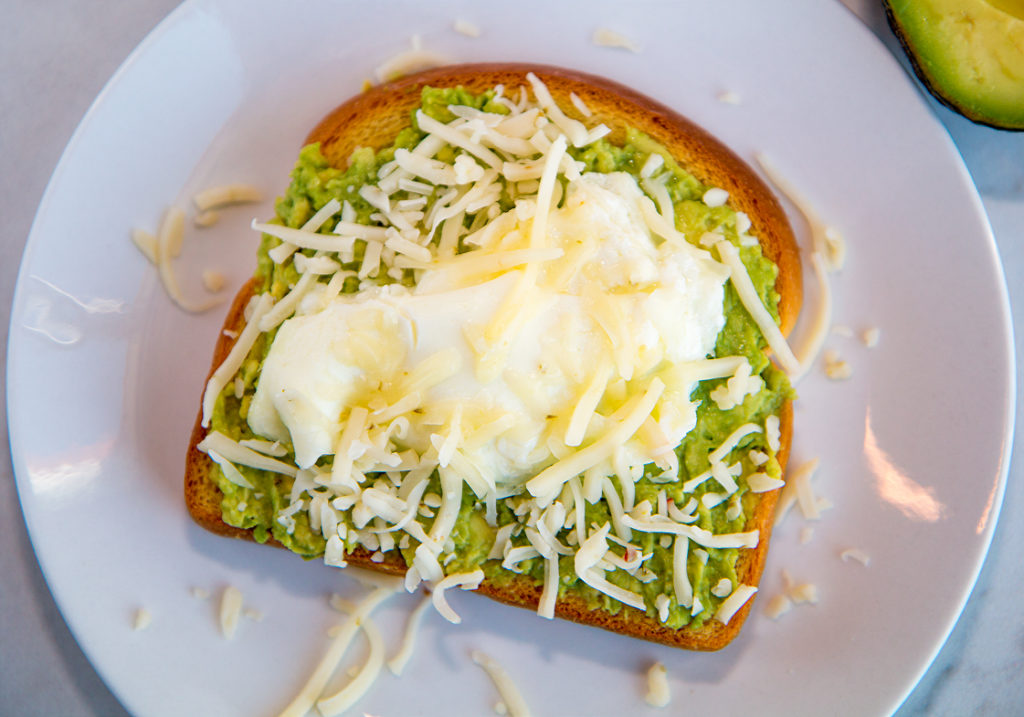
If you thought “avocado toast” was a modern day food trend created solely for Instagram, you would be mistaken. The concept was originally published in a 1920s cookbook called Covina Argus, out of San Gabriel, CA; yet other accounts claim it began in Australia. Regardless, the idea of pairing bread with avocados is certainly not new—it has been enjoyed for ages throughout the British colonies as well as Latin America (possibly even dating back to the Aztecs).
Avocado Toast Recipes:
1950: Monte Cristo
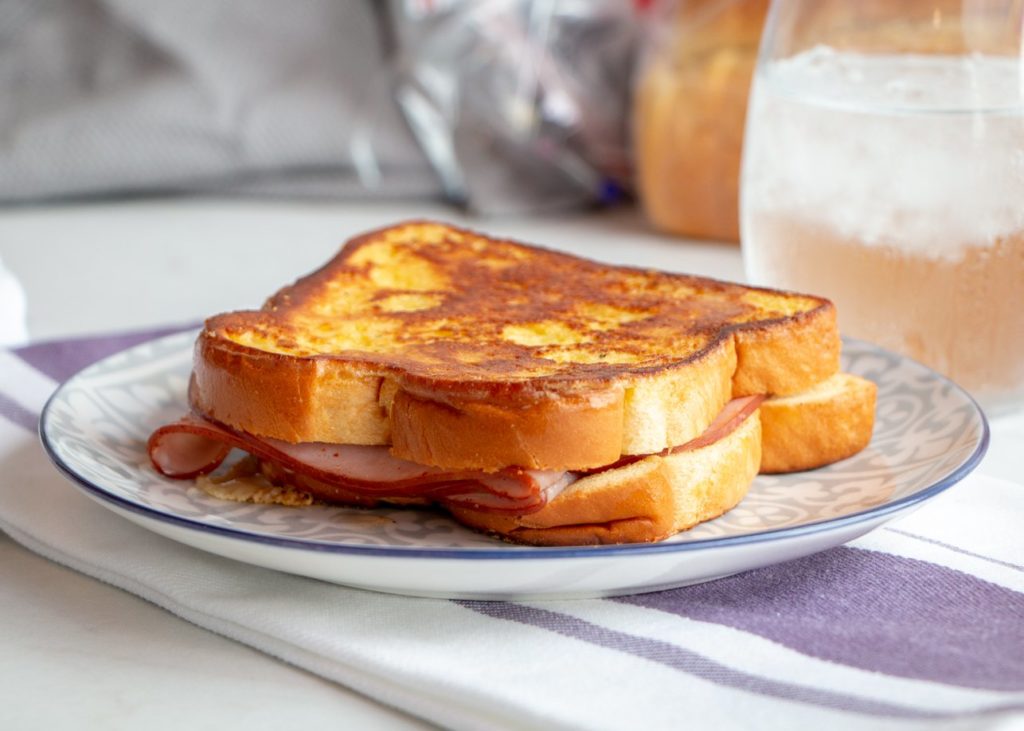
Most likely based on the French Croque Monsieur, the Monte Cristo sandwich was established during the 1950s in southern California. The sandwich typically includes ham, turkey, and Swiss cheese between two slices of bread; the sandwich is then battered (similar to French toast) and fried in butter until golden and toasted on both sides. It is commonly served dusted with powdered sugar or with a side of raspberry jam for dipping.
Monte Cristo Recipe:
- Monte Cristo (see recipe variations for instructions)
Modern Era

Well, that brings us to today! They say there is nothing new under the sun—and we are certainly seeing the reappearance of some “old” breakfast foods being disguised as trendy new creations. Think: upscale breakfast platters, fancy eggs-in-a-hole dishes, picturesque avocado toast, cereal-crusted French toast, and over-the-top breakfast sandwiches. That being said, there are always new recipes to create, and breakfast is as good a meal as any to find inspiration!
Contemporary Breakfast Recipes:
- Yogurt Smoothie Bowls
- Chai Tea Bread Pudding
- Matcha Fruit Crostini
- Everything Bagel French Toast
- Eggs in a Cloud
- Breakfast in a Mug
Employee Breakfast Q&A
Hear what a few of our employees had to say about breakfast in the below video!
Let us know what your favorite breakfast food is by giving us a shout out on social media!
Sources:
- https://www.latimes.com/archives/la-xpm-1991-01-31-fo-5-story.html
- https://www.reviewthis.com/about-toast-history-and-facts/
- https://www.theatlantic.com/entertainment/archive/2016/06/breakfast-the-most-contentious-meal-of-the-day/487220/
- https://www.englishbreakfastsociety.com/full-english-breakfast.html
- https://medium.com/@ButcherBox/quiche-the-ultimate-brunch-food-with-a-unique-history-1f56e17746
- https://theculturetrip.com/europe/united-kingdom/articles/where-did-the-full-english-breakfast-originate/
- https://philadelphiaencyclopedia.org/archive/scrapple
- https://www.eater.com/2015/7/16/8962643/pork-roll-taylor-ham-new-jersey
- https://www.eater.com/2016/2/19/11056800/eggs-in-toast-egg-in-a-hole-basket
- https://www.tasteofhome.com/article/who-created-eggs-benedict/
- https://www.huffpost.com/entry/the-humble-history-of-the_b_9721710
- https://www.history.com/news/cereal-breakfast-origins-kellogg
- https://www.acoalcrackerinthekitchen.com/2018/11/12/creamed-chipped-beef-sos/
- https://whatscookingamerica.net/History/Sandwiches/MonteCristoSandwich.htm
Our latest content, delivered straight to your inbox.
Be the first to hear about our newest recipes, tips, and company updates!

